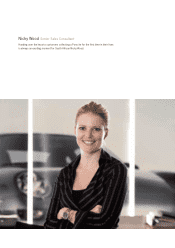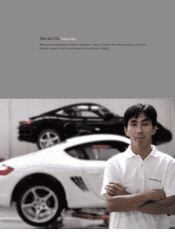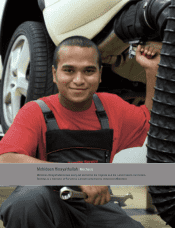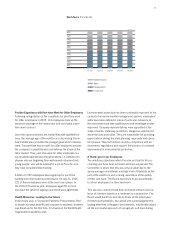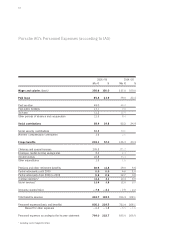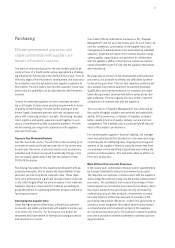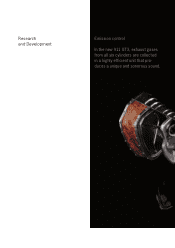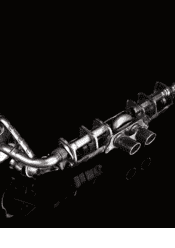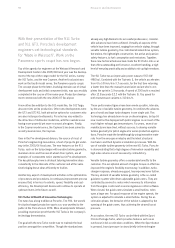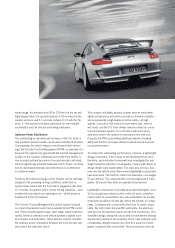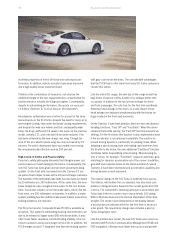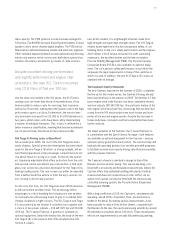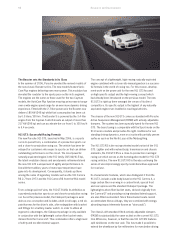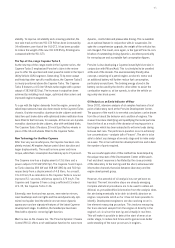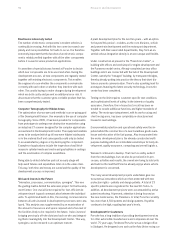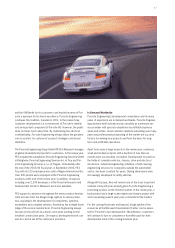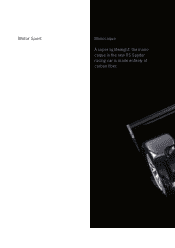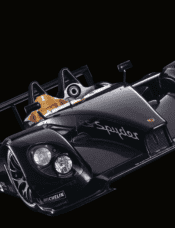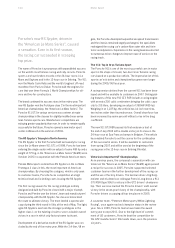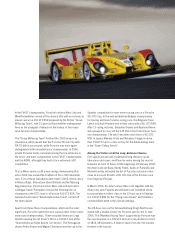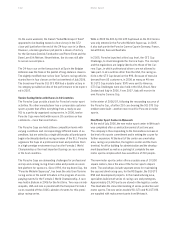Porsche 2005 Annual Report Download - page 94
Download and view the complete annual report
Please find page 94 of the 2005 Porsche annual report below. You can navigate through the pages in the report by either clicking on the pages listed below, or by using the keyword search tool below to find specific information within the annual report.
92
excellent properties in terms of frontal and side impact per-
formance. In addition, vehicle acoustics have been improved
and a high-quality bonus sound achieved.
Thanks to this combination of measures, not only has the
additional weight of the new equipment been compensated for,
but the vehicle is actually five kilograms lighter. Consequently,
despite its astonishing performance, the sports car uses just
12.8 liters (Tiptronic S: 13.6) of fuel per 100 kilometers.
Aerodynamic optimization was a further focal point of the deve-
lopment work on the 911 Turbo. Despite the need for more air to
meet engine cooling, intercooler and brake cooling requirements,
and despite the wide rear wheels and the consequently wider
body, the drag coefficient (Cd value) is the same as the previous
model, namely 0.31, and rear axle lift has been reduced. This
has been achieved by the new-design rear wing. Though the
area of the so-called bi-plane wing has only increased by 23
percent, Porsche’s developers have succeeded in increasing
the aerodynamically effective area by 200 percent.
High Levels of Active and Passive Safety
Porsche’s safety philosophy demands that if engine power out-
put increases so must braking performance. Consequently, the
new 911 Turbo has been given an even more powerful braking
system. On the front axle, borrowed from the Carrera GT, are
six-piston fixed-caliper brakes with a 42 percent larger pad area.
The diameter of the ventilated brake disks has also been increased
by 20 millimeters to 350 millimeters. At the same time, the new
brake design has also assigned more power to the rear brakes.
Here, four-piston calipers act on the brake disks, which, like the
front ones, are 350 millimeters in diameter. In addition, a brake
system prefilling function and the brake assist feature ensure that
braking distances are reduced.
The Porsche Ceramic Composite Brake (PCCB) is available as
an option. This system’s outstanding braking characteristics are
due to its enhanced, larger-sized (380 mm) brake disks. It also
offers even faster response, excellent fading stability, total cor-
rosion resistance and an even longer service life. In addition, the
PCCB weighs around 17 kilograms less than the braking system
with gray cast iron brake disks. The considerable advantages
that the PCCB has to offer mean that many 911 Turbo customers
choose this option.
Like the entire 911 range, the new top-of-the-range model has
high levels of passive safety. A total of six airbags protect the
occupants. In addition to the two full-size airbags for driver
and front passenger, Porsche has, for the first time worldwide,
fitted two head airbags in the doors. In a side impact, these
head airbags are deployed simultaneously with the thorax air-
bags located in the front seat backrests.
On the Tiptronic S automatic gearbox, there are two new dynamic
handling functions, “Fast Off” and “Fast Back”. When the driver
releases the throttle quickly, the “Fast Off” function prevents up-
shifting. For the first time, this function is also implemented even
if the accelerator is not released completely. The result is im-
proved driving dynamics, particularly on winding roads. When
adopting a sporty driving style and making rapid switches from
the throttle to the brake, the new additional “Fast Back” function
facilitates faster downshifting when braking. When braking be-
fore a corner, for example, “Fast Back” supports automatic gear
matching for dynamic acceleration out of the corner. In addition,
gearshift and response times on the latest-evolution 5-speed
Tiptronic S have been shortened and acceleration capability and
driving dynamics much improved.
The exterior design of the 911 Turbo is evidently more sporty.
The interior, with leather trim as standard, has also been com-
pletely re-designed and is based on the current-generation 911
Carrera. The instruments, featuring aluminum-colored dials and
Turbo logo in the rev counter, have characteristic 911 styling.
White LEDs have been used to improve illumination of the dials
at night. The center round instruments in the display feature
a boost pressure indicator which for the first time is shown as
a bar graph. The new interior design also includes a special
Turbo-design gear lever.
Like the predecessor model, the new 911 Turbo also comes as
standard with Porsche Communication Management (PCM) and
DVD navigation, offering much faster data access and greater
Research and Development


